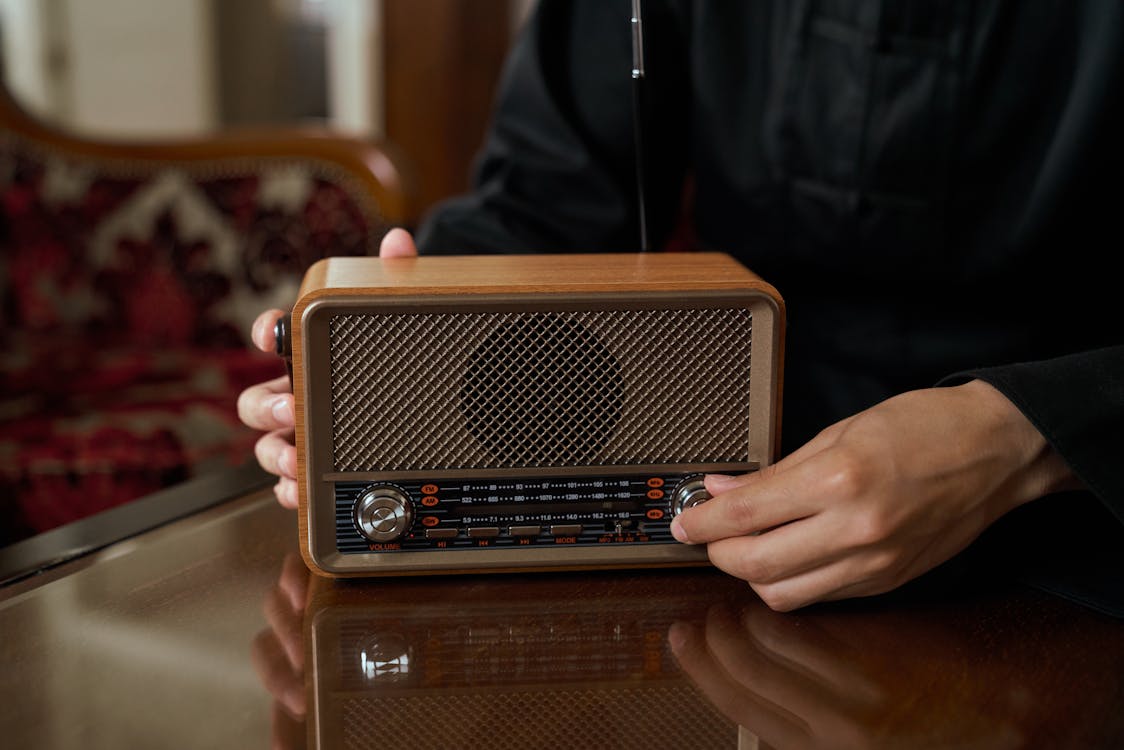
Radio invention timeline
| Timeline | Event |
| 1831 | Michael Faraday begins a series of experiments in which he discovers electromagnetic induction. The relation was mathematically modeled by Faraday’s law, which subsequently became one of the four Maxwell equations. |
| 1864 | James Clerk Maxwell predicts the existence of electromagnetic waves in his paper’ a dynamical theory of the electromagnetic field’. |
| 1871 | Edwin Houston, while setting up a large sparking Ruhmkorff coil to be used in a demonstration, notices he can draw sparks from metal objects throughout the room. He attributes this to induction. |
| 1875 | While experimenting with an acoustic telegraph, Thomas Edison notices an electromagnet producing unusual sparks. He finds this strange sparking could be conducted 25 miles along telegraph wires and be detected a few feet from the wire. |
| 1878 | David E. Hughes noticed that sparks generated by an induction balance caused noise in an improved telephone microphone he was developing. |
| 1886 to 1888 | After noticing how discharging an electric current into a coil produced a spark in a second nearby coil, Heinrich Hertz sees a way to build a test apparatus to solve von Helmholtz’s “Berlin Prize” problem. |
| 1885 to 1892 | Murray, Kentucky farmer Nathan Stubblefield conducts wireless transmissions some claim to be radio, but his devices seem to have worked by induction transmission rather than radio transmission. |
| 1892 to 1893 | Nikola Tesla wirelessly transmitted electromagnetic energy. He made the first public demonstration of radio in St. Louis in 1893. |
| 1896 to 1897 | Guglielmo Marconi filed for patent protection of his radio apparatus. He established the Wireless Telegraph and Signal Company in 1897. |
| 1901 | The first transAtlantic signal was sent by Marconi from Ireland to Canada. |
| 1902 | Amateur (today is known as “ham”) radio introduced to the U.S. via a Scientific American article on “How to Construct an Efficient Wireless Telegraphy Apparatus at Small Cost.” |
| 1906 | Reginald Fessenden is the 1st to transmit a program of speech and music. |
| 1910 |
First radio transmission from an airplane. The Wireless Ship Act was passed by the United States Congress, requiring all ships of the United States traveling over two hundred miles off the coast and carrying over fifty passengers to be equipped with wireless radio equipment with a range of one hundred miles. |
| 1912 | The RMS Titanic sank. While in distress, it contacted several other ships via wireless. After this, wireless telegraphy using spark-gap transmitters quickly became universal on large ships. |
| 1913 | Marconi initiated duplex transatlantic wireless communication between North America and Europe for the first time, using receiver stations in Letterfrack Ireland, and Louisbourg, Nova Scotia. |
| 1916 | First regular broadcasts on 9XM (now WHA) – Wisconsin state weather, delivered in Morse Code |
| 1917 | All U.S. radio stations not needed by the government were closed as WWI began. |
| 1919 | First clear transmission of human speech, (on 9XM) after experiments with voice (1918) and music (1917). |
| 1920s | Radio was first used to transmit pictures visible as television. |
| 1920 | Spark-gap telegraphy stopped. |
| 1922 | The first on-air advertisement was carried by a New York station. |
| 1926 | The first permanent national network, NBC, was formed. CBS followed a year later. |
| 1927 | The Federal Radio Commission was established to bring order to chaotic airwaves. |
| 1933 |
FDR broadcast the first of his 30 “fireside chats” The FM radio was patented; Edwin H. Armstrong invented it. FM uses frequency modulation of the radio wave to minimize static and interference from electrical equipment and the atmosphere, in the audio program. |
| 1938 | CBS Radio broadcasts H.G. Wells’ classic The War of the Worlds. Although most listeners understood that the program was a radio drama, the next day’s headlines reported that thousands of others — perhaps a million or more — plunged into panic, convinced that America was under a deadly Martian attack. |
| 1947 | Cellular radiotelephony, with call handoff and frequency reuse, was conceived at Bell Laboratories |
| 1954 | Texas Instruments produces the first commercial pocket transistor radio, launching the portable electronic age. |
| 1960 | Sony introduced their first transistorized radio, small enough to fit in a vest pocket, and able to be powered by a small battery. It was durable because there were no tubes to burn out. Over the next twenty years, transistors displaced tubes almost completely except for very high-power or very high-frequency uses. |
| 1963 | Color television was commercially transmitted, and the first (radio) communication satellite, TELSTAR, was launched. |
| 1987 | The GPS constellation of satellites was launched. |
| 1994 | The U.S. Army and DARPA launched an aggressive successful project to construct a software radio that could become a different radio on the fly by changing software. |
| Late 1990s | Digital transmissions began to be applied to broadcasting. |
| 2001 | XM Radio |
Timeline of Radio Invention and Development: 2001 – 2023
While the invention of the radio itself predates 2001, significant advancements and developments have occurred in the field since then. Here’s a timeline highlighting some of the key milestones:
2001:
- Digital Radio Mondiale (DRM): The DRM standard for digital audio broadcasting has been launched, offering improved audio quality and data transmission capabilities over traditional AM and FM radio.
- Software-Defined Radio (SDR): SDR technology begins to gain traction, allowing for more flexible and reconfigurable radio designs. Business – Money Making – Marketing – E-commerce
2002:
- Sirius Satellite Radio and XM Satellite Radio: These two satellite radio services merge to form SiriusXM, offering a wider variety of channels and programming across the United States.
- HD Radio: The In-band On-Channel (IBOC) digital radio standard, also known as HD Radio, expands its reach in the US, offering improved audio quality and additional data services.
2003:
- DAB+ (Digital Audio Broadcasting): The DAB+ standard for digital radio broadcasting has gained momentum in Europe and other parts of the world, offering similar advantages to DRM.
- Podcasting: Podcasting emerges as a popular new form of audio content distribution, with radio stations and individual creators using it to deliver on-demand programs. Health books, guides, exercises, habits, Diets, and more
2004-2007:
- Growth of Satellite Radio: Satellite radio services like SiriusXM experience significant subscriber growth, particularly in the US.
- Digital Radio Adoption: Digital radio technologies like DRM, DAB+, and HD Radio see gradual adoption in various regions around the world.
2008-2012:
- Rise of Internet Radio: Internet radio platforms like Pandora and Spotify have gained popularity, offering vast libraries of on-demand music and personalized listening experiences.
- Mobile Radio: Smartphones with integrated FM radio receivers become widespread, allowing users to listen to traditional radio broadcasts on the go. Fitness – Meditation – Diet – Weight Loss – Healthy Living – Yoga
2013-2017:
- Smart Speakers and Voice Assistants: The emergence of smart speakers like Amazon Echo and Google Home, powered by voice assistants like Alexa and Google Assistant, introduces new ways to interact with radio content.
- Streaming Services Expand: Music streaming services like Spotify and Apple Music add live radio stations to their offerings, blurring the lines between traditional radio and on-demand listening.
2018-2023:
- Podcast Boom: The podcasting industry experiences explosive growth, with millions of podcasts available on various platforms and a diverse range of topics covered.
- Radio Innovation: Traditional radio stations experiment with new technologies like podcasting, social media integration, and interactive features to stay relevant in the digital age. RPM 3.0 – 60% CONVERSION & Money for Affiliate Marketing
- Audio Entertainment Consolidation: Mergers and acquisitions occur in the audio entertainment industry, with companies like Spotify acquiring podcast platforms and radio broadcasters expanding their digital offerings.
Looking Ahead
The future of radio is likely to involve continued convergence with digital technologies, further personalization of listening experiences, and the integration of voice assistants and smart speakers. Additionally, podcasting is expected to remain a major force in the audio entertainment landscape.
It’s important to note that this is not an exhaustive timeline and specific developments may vary depending on the region or area of focus.
Learn more about Leonardo-da-Vinci’s-inventions.
Sources: science.howstuffworks.com; wikipedia.com, lynn-library.libguides.com
More Interesting Articles
- Electric Car Battery – Type | Performance | Mileage
- Work-Energy Theorem – Explanations | Examples
- How the Hydrogen-Powered Cars Works
- LCD vs LED Monitor – Difference Between Displays
- Brushless DC Motor Application, Pros, and Cons
- How Does an Electric Car Motor Work?
- Industrial Electric Motors – Role and Components
- What Made Leonardo da Vinci’s Inventions Great?
- Astonishing Greatest Engineering of All Ages
- What are the Great Thomas Edison Inventions?
- What is the History of the First Car Ever Made?
- Physics Scientists and engineers of All Times
- Spinning Jenny Invention in the Industrial Revolution
- 17th Century Dutch Painter – Role and Contribution
- Inventions in the 17th Century that Paved the World
- How the Invention of Power Loom Changed the World
- Steam Engine Invention That Steered Civilization
- 27 Industrial Age Inventions – A Revolution for Human
- Nikola Tesla Time Machine that Shook the World
- 31 Renaissance Inventions that Changed the World
